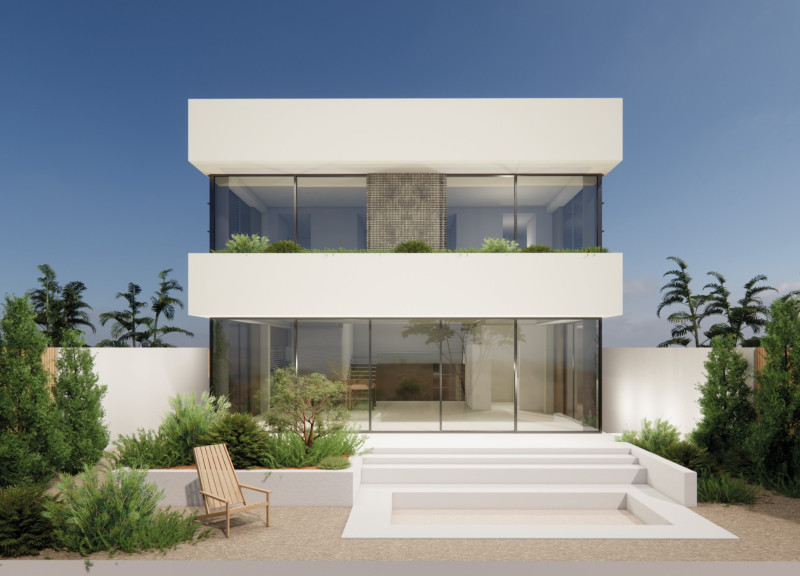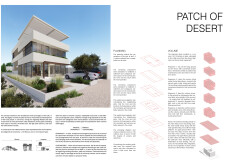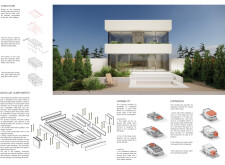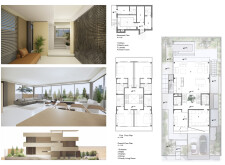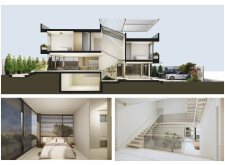5 key facts about this project
## Overview
The project, located in the arid climate of the United Arab Emirates, features a contemporary residential structure designed to harmonize modern aesthetics with functional living while responding to its environmental context. The architectural approach incorporates traditional elements of local design, fostering sustainability and a connection to the region's cultural heritage.
## Spatial Strategy and Planning
The design employs a dual narrative of "Massive" and "Fibrous" architectural elements, reflecting a balance between solid structures and lighter components. This framework not only emulates traditional Emirati homes but also facilitates adaptability for modern lifestyles. The project optimizes the narrow plot's layout to enhance both interior and exterior usability, ensuring ample outdoor spaces and sufficient interior volume. Living areas are strategically distributed across two levels, maintaining a clear distinction between living and service zones to enhance accessibility and efficient circulation.
Key planning responses include the placement of service blocks adjacent to living spaces to minimize movement distances, and elevating main living areas to maximize natural light exposure while creating an expansive outdoor experience.
## Materiality and Sustainability
The structural design features a grid layout, promoting both functionality and aesthetic coherence. Reinforced concrete serves as the primary material for structural components, while prefabricated steel is utilized for beams and columns to facilitate large spans without obstructing views. Insulated panels are employed to enhance energy efficiency and provide both thermal and acoustic comfort.
Interior spaces prioritize a light and airy atmosphere, characterized by extensive use of glass and neutral color palettes. Natural stone and textured glass finishes contribute to a sophisticated interior that fosters a healthy living environment. Expansive windows and open layouts ensure abundant natural light and ventilation, while the integration of sliding glass doors facilitates a connection between indoor and outdoor spaces, enhancing the overall spatial experience.


